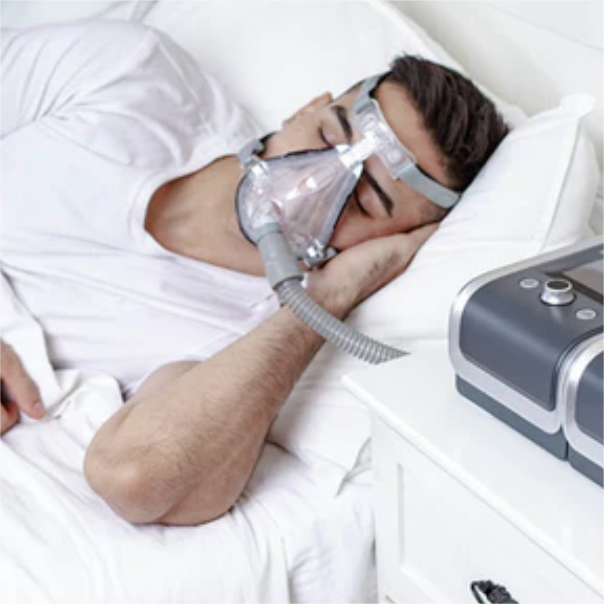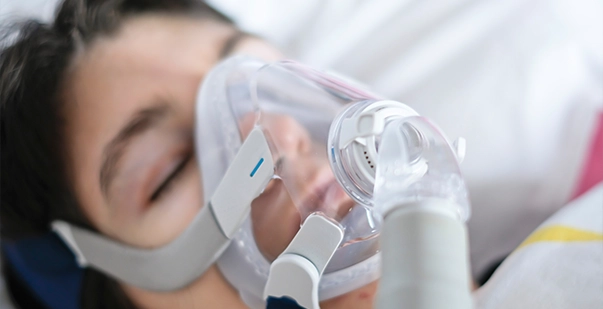Bipap vs. CPAP: Which Is the Ideal for Your Sleep Problem?
When navigating the complexities of rest problems, the selection between BiPAP and CPAP treatment is a vital consideration. Each modality offers distinct benefits customized to certain conditions, yet the decision depends upon individual person demands and convenience degrees. While CPAP gives a steady air flow appropriate for obstructive rest apnea, BiPAP's double pressure setups may improve convenience for those with more elaborate respiratory concerns. Understanding these differences can significantly influence therapy efficiency, leaving one to consider which option absolutely lines up with their health and wellness demands and lifestyle.
Comprehending Sleep Disorders
Sleep problems encompass an array of conditions that interrupt regular sleep patterns, impacting both the quality and duration of remainder. These disorders can materialize in numerous forms, consisting of sleeping disorders, rest apnea, narcolepsy, restless leg syndrome, and parasomnias. Each problem presents distinct obstacles, frequently bring about significant daytime tiredness, cognitive problems, and emotional disturbances.
Sleeplessness is identified by difficulty falling or remaining asleep, while rest apnea involves repeated disturbances in breathing throughout sleep, commonly bring about fragmented rest. Narcolepsy, on the other hand, is marked by too much daytime drowsiness and sudden rest strikes. Uneasy leg disorder creates uncomfortable feelings in the legs, triggering an uncontrollable urge to move them, which can also impede the capacity to go to sleep.
The effect of rest problems prolongs beyond private health and wellness, influencing total efficiency, partnerships, and lifestyle. Understanding the certain nature of each disorder is vital for reliable medical diagnosis and therapy. As rest health and wellness ends up being significantly identified as a crucial element of general wellness, attending to these conditions is vital for improving both sleep quality and daily functioning.
How CPAP Works
Continuous Positive Airway Pressure (CPAP) therapy is frequently employed as a key therapy for obstructive sleep apnea (OSA) The mechanism of CPAP entails making use of an equipment that provides a stable stream of air through a mask put on throughout sleep. This air movement keeps positive pressure in the respiratory tract, stopping the collapse or obstruction of the throat that can take place throughout sleep.
When a person takes a breath in, the CPAP device gives a constant flow of air, ensuring that the respiratory tract stays open - BiPAP Rental. This not just alleviates the signs and symptoms of OSA, such as snoring and interrupted rest patterns, however also lowers the affiliated health and wellness risks, consisting of cardiovascular difficulties and daytime tiredness
The stress settings on a CPAP machine can be personalized to meet individual person demands, usually established with a rest research study. People usually undertake titration research studies to locate the optimal pressure degree for their unique condition. Routine follow-up and adjustments may be essential to make sure performance and comfort. Generally, CPAP treatment has been shown to dramatically improve the high quality of rest and total health for individuals experiencing obstructive rest apnea.
How BiPAP Works
BiPAP, or Bilevel Positive Air Passage Stress, is a specific kind of non-invasive air flow that is especially beneficial for patients with conditions such as complex rest apnea or respiratory disorders. Unlike CPAP, which delivers a continuous stream of air at a solitary stress, BiPAP gives 2 distinctive pressure settings: a greater inspiratory stress for breathing and a lower expiratory important site stress for exhalation. This dual-pressure method permits less complicated breathing, lowering the initiative needed during exhalation.
The device operates via a mask fitted over the nose or mouth, attached to a maker that produces atmospheric pressure. When the patient breathes in, the equipment provides the higher stress to aid with air flow, guaranteeing that the airway continues to be open. Upon exhalation, the equipment immediately lowers the stress, making it a lot more comfortable for the patient to take a breath out.

Secret Distinctions In Between BiPAP and CPAP

On the other hand, BiPAP (Bilevel Favorable Airway Pressure) uses 2 different pressure setups: one for breathing and a reduced one for exhalation. This dual pressure system enables even more comfortable breathing, particularly for individuals who fight with breathing out versus a continuous pressure. BiPAP is commonly advised for patients with complex sleep apnea, chronic obstructive lung condition (COPD), or those that call for added support during sleep.
Furthermore, the complexity of BiPAP gadgets normally causes a greater price and calls for extra mindful titration than CPAP. BiPAP Rental. Understanding these key differences can aid in recognizing which device may be better for particular sleep problems, establishing the foundation for informed treatment choices
Selecting the Right Treatment
Just how can one determine one of the most appropriate therapy for handling rest disorders? The choice in between BiPAP and CPAP treatment largely rests on the specific features of the rest problem, the person's total content health, and their convenience with the tool. CPAP, which delivers a continuous stream of air, is typically suggested for obstructive rest apnea (OSA) It keeps an open air passage during rest, effectively protecting against apneas and hypopneas.
Alternatively, BiPAP provides 2 degrees of stress: one for inhalation and a reduced one for exhalation. This dual stress system is beneficial for patients with complicated sleep apnea or those who experience trouble exhaling versus a continual pressure. In addition, BiPAP is frequently recommended for people with respiratory conditions, such as chronic obstructive pulmonary illness (COPD), where varying pressure settings can enhance convenience and compliance.
Ultimately, a detailed evaluation by a rest specialist, consisting of a rest study, can help identify which therapy lines up ideal with the client's needs. Variables such as comfort, ease of usage, and certain medical conditions should likewise be thought about to optimize treatment results.
Final Thought
In recap, both BiPAP and CPAP serve unique functions in the monitoring of rest problems. CPAP works for obstructive sleep apnea via consistent airflow, while BiPAP offers twin stress setups that improve convenience for those with intricate rest apnea or breathing issues. The selection between these therapies must be assisted by private needs and conditions, necessitating an extensive analysis by a sleep expert to guarantee ideal treatment end results and improved high quality of rest.

In general, CPAP treatment has been shown to substantially boost the quality of rest and overall health and wellness for people experiencing from obstructive sleep apnea.
BiPAP is usually advised for individuals with complex rest apnea, persistent obstructive lung disease (COPD), or those who call for added assistance during rest.
CPAP is reliable for obstructive sleep apnea with constant air flow, while BiPAP supplies twin pressure setups that enhance comfort for those with intricate rest apnea or respiratory system problems.